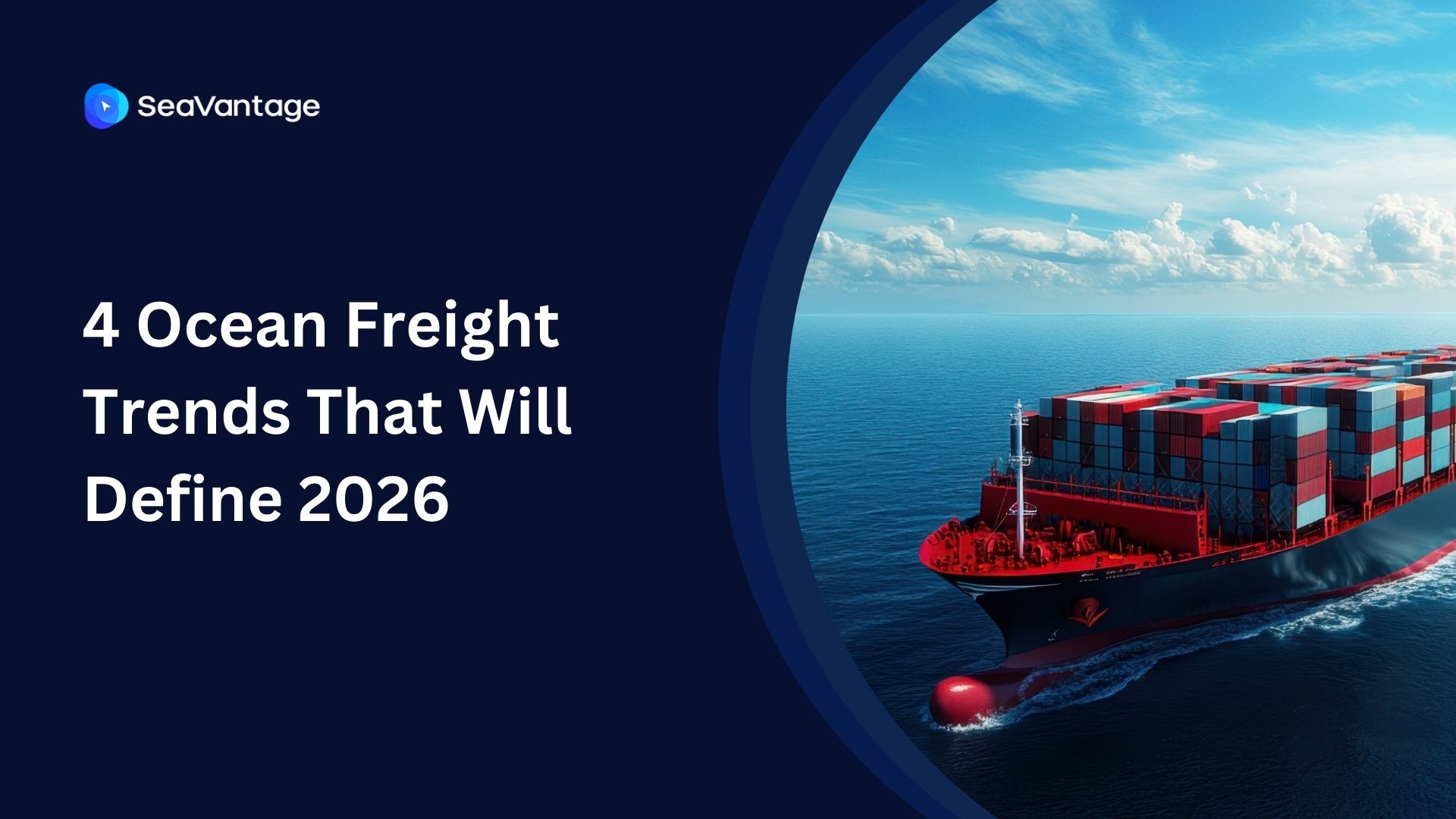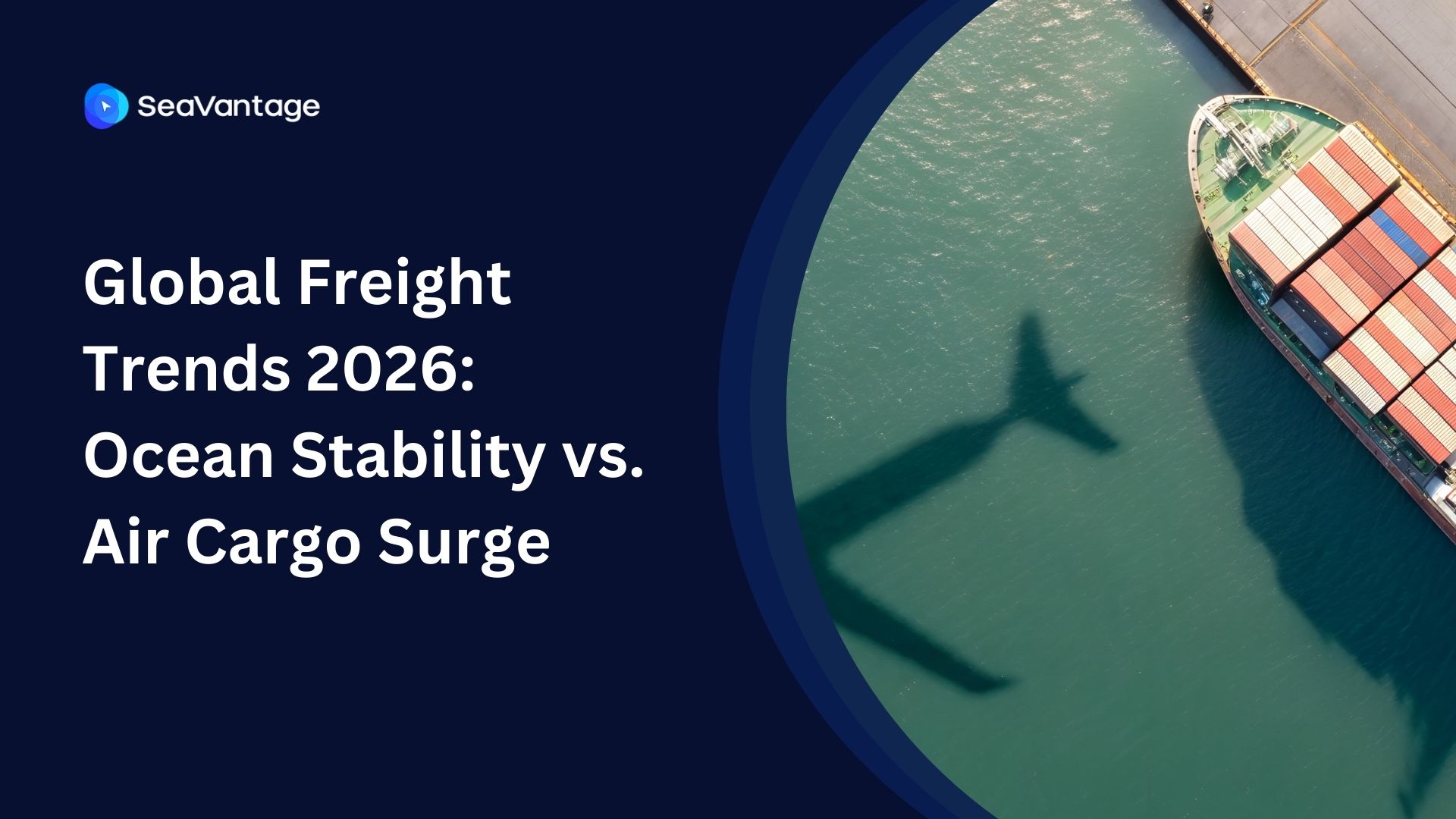Escalating Tension in the Middle East and Beyond - How 2024 is Reshaping Global Maritime Trade

The year 2024 has witnessed a combination of unprecedented disruptions that have significantly impeded the international shipping industry's operations. These disruptions range from port closures, exemplified by the catastrophic collapse of the Francis Scott Key Bridge in Baltimore, to heightened geopolitical tensions in the Middle East Region.
The latest includes this report by Global Maritime Risk Management expert, Ambrey, which details escalating military tensions in Libya particularly around oil production and control, which pose a significant threat to the stability of Libya and could lead to localized conflict, impacting oil markets and regional security. The cumulative impact of these events threatens to severely hinder global trade flows and exert a profound influence on all stakeholders within the ecosystem of the global supply chain.
Shippers, encompassing both exporters and importers, bear the brunt of these disruptions, encountering delays, potential missed sales windows, and inflated transportation costs. Freight forwarders are tasked with the arduous endeavor of reworking logistics plans and securing alternative transport options, often at a premium. Carriers, including trucking companies and shipping lines, experience the cascading effects through extended routes, congestion at alternate ports, and the necessity to adjust schedules to accommodate rerouted cargo.
While positive developments, such as rising water levels in the Panama Canal and a decrease in Red Sea attacks, offer a modicum of hope, the long-term ramifications of these disruptions are likely to persist. In this increasingly challenging environment, real-time ocean visibility data allows businesses to navigate the complexities of the global supply chain and ensure efficient cargo movement.
1. Escalating Tension in the Red Sea Region
What happened?
Tensions flared in the Red Sea in late 2023, causing a major headache for the global supply chain. The Houthi rebels, a Yemeni Shia militia group, launched a series of attacks on commercial shipping vessels traversing the Red Sea region. The Houthis are the primary power in northern Yemen and have been engaged in a brutal civil war against the internationally recognized Yemeni government since 2015.
Shipping Industry Feels the Ripple Effects
This resulted in a nearly 30% drop in container traffic through the Red Sea, a crucial route for East-West trade. Shippers, both importers and exporters, faced the brunt of the disruption. Exporters saw delayed deliveries and potential missed sales windows, while importers scrambled for alternative routes or faced inflated transportation costs. Freight forwarders, responsible for coordinating the movement of goods, had to rework logistics plans and secure alternative transportation options, often at a premium. The impact trickled down to carriers like trucking companies and shipping lines. Truckers faced longer routes and congestion at alternate ports, while shipping lines had to adjust schedules and capacities to handle diverted cargo at other East Coast ports.
Looking forward
The good news? The situation has been subsiding since mid-May 2024. Attacks have subsided, and while the long-term security of the Red Sea remains in question, the focus has shifted to clearing the backlog and restoring normalcy. The Suez Canal, which connects the Red Sea to the Mediterranean, is slowly recovering lost traffic, but the UN Trade Agency (UNCTAD) still warns of potential delivery delays and rising inflation due to the disruption.
2. The Francis Scott Key Bridge Collapse
What happened?
In March 2024, a significant disruption occurred at the Port of Baltimore when the Francis Scott Key Bridge suffered a catastrophic collapse. The incident stemmed from a complete loss of power aboard the MV Dali, a large container ship. This electrical malfunction rendered the vessel uncontrollable, causing it to collide with a critical support pillar of the bridge. The impact resulted in the collapse of a major bridge section into the Baltimore Harbor.
Shipping Industry Feels the Ripple Effects
The collapse caused significant disruptions to international chains. Shippers (exporters and importers) faced delays and disruptions to their cargo movement. Exporters saw their goods stranded at the docks, potentially missing crucial delivery windows and incurring storage fees. Importers, on the other hand, were left scrambling to locate alternative routes for their inbound shipments, often leading to higher transportation costs. Freight forwarders, responsible for coordinating the movement of goods, had to rework their logistics plans on the fly, facing challenges in securing alternative transportation options and managing client expectations. Carriers, including trucking companies and shipping lines, also felt the strain. Truckers faced longer routes and potential congestion issues at alternate ports, impacting their schedules and profitability. Shipping lines had to adjust their schedules and capacities to accommodate the influx of diverted cargo at other East Coast ports.
A Path Towards Reopening
However, there are positive developments. In early May 2024, a controlled demolition successfully removed the collapsed bridge span. This paves the way for the removal of the Dali and a projected reopening of the main channel by the end of the month. This will provide much-needed relief to the shipping industry, which has faced significant logistical challenges as cargo is rerouted to other East Coast ports like Virginia and New York/New Jersey. While the long-term solution remains undefined, with details regarding the bridge's replacement yet to be announced, this progress marks a significant step towards restoring normalcy to the Port of Baltimore.
3. Panama Canal Dries Up, Trade Flows Slow Down
What happened?
The Panama Canal, a critical artery for global trade, faced historically low water levels since June 2023. This resulted from reduced rainfall in the Amazon rainforest, exacerbated by El Niño. To navigate the shallower waters, the Panama Canal Authority restricted both the number (down 30%) and size of ships allowed to pass.
Shipping Industry Feels the Squeeze
Shippers, including importers and exporters, were hit hard. Exporters faced delays and potential storage fees as cargo sat at docks. Importers scrambled for alternative routes or paid more for transportation. Freight forwarders wrestled with reworked logistics and securing alternative transport options at potentially higher costs. Disruptions impacted carriers too, with truckers facing longer routes and congestion, and shipping lines needing to adjust schedules and capacities.
Water Levels Rise, But Recovery Takes Time
As of May 2024, with the rainy season underway, water levels are finally rising. However, the Panama Canal Authority is still evaluating the situation and hasn't announced a return to normal operations. The impact on the global supply chain is expected to linger for some time, with potential delays and rising transportation costs.
4. Ukraine War Snarls Supply Chains
What happened?
Russia's invasion of Ukraine in February 2022 threw a wrench into the already fragile global supply chain. Disruptions include restricted exports of key commodities like wheat (Ukraine and Russia account for over 30% of the global market) and fertilizer from the region, causing price hikes for food and agricultural products. Additionally, sanctions on Russia have hampered trade in essential materials like nickel and palladium, which are used in electronics and batteries.
Shippers Scramble for Solutions
Shippers (exporters and importers) face a multitude of challenges. Exporters of various goods struggle with raw material shortages and rising costs. Importers, particularly those reliant on Ukrainian grain and Russian metals, scrambled for alternative sources, often at a premium. Freight forwarders were tasked with navigating this complex landscape, finding new routes and suppliers while managing cost increases for their clients. Disruptions extended to carriers as well. Truckers faced longer routes due to port congestion and potential fuel price hikes while shipping lines grappled with adjusted schedules and rerouting cargo.
War's Impact Lingers, But Hope Emerges:
As of May 2024, the war continues, and its long-term effects remain uncertain. However, a recent agreement allows for the resumption of some Ukrainian grain exports, offering a glimmer of hope for global food security. Despite this, the UN trade agency warns of potential food shortages and persistent inflation due to the ongoing disruptions.
5. Tense Standoff in the Taiwan Strait
What happened?
Geopolitical tensions between China, Taiwan, and the USA have been simmering for years but flared up in 2024. China views Taiwan as a breakaway province and hasn't ruled out military action for reunification. The US, obligated by the Taiwan Relations Act to help Taiwan defend itself, has increased its military presence in the region. This has raised concerns of a potential conflict that could disrupt vital shipping lanes.
Shippers Brace for Impact
While a full-blown conflict hasn't materialized, the situation is causing jitters in the shipping industry. Shippers (exporters and importers) worry about potential disruptions to trade routes, especially for the vital semiconductor industry heavily concentrated in Taiwan. Freight forwarders are developing contingency plans for rerouting cargo in case of conflict. Rising insurance premiums due to heightened risk are also a concern.
Uncertainty Remains, But Communication is Key
As of May 2024, the situation remains tense. Diplomatic efforts are ongoing to de-escalate tensions. However, the lack of a clear resolution keeps the shipping industry on edge. Open communication between governments, shipping companies, and stakeholders is crucial to navigate this complex situation and minimize potential disruptions.
How Real-time Visibility Data Can Help
Freight Forwarders (FFs):
- Enhanced Route Optimization: Real-time data allows FFs to dynamically adjust shipment routes in response to disruptions like port closures (e.g., Baltimore bridge collapse) or security threats (e.g., Red Sea attacks). This minimizes delays and ensures efficient cargo movement.
- Predictive Analytics: By leveraging data on historical trends, weather patterns, and potential geopolitical hotspots (e.g., Ukraine war or Taiwan Strait tensions), FFs can proactively anticipate disruptions and develop contingency plans. This proactive approach mitigates risk and fosters supply chain resilience.
- Collaborative Visibility: Sharing real-time data with other FFs and stakeholders fosters collaboration. This enables collective problem-solving and optimization of container utilization, potentially leading to cost savings.
Exporters:
- Risk Mitigation: Real-time data empowers exporters to make informed decisions in response to unforeseen events. For instance, data on port congestion due to the Panama Canal water shortage can prompt them to explore alternative routes or secure additional insurance coverage.
- Transparency and Negotiation Power: Visibility data allows exporters to provide importers with accurate information on delays caused by external factors. This transparency strengthens relationships and bolsters their negotiating power when discussing pricing or delivery schedules.
Importers:
- Proactive Customer Communication: Real-time data allows importers to anticipate delays and proactively communicate them to their customers. This fosters trust and minimizes disruption to their customer service efforts (e.g., informing them about potential delays due to the Taiwan Strait situation).
- Scenario Planning: Data can be used to model potential disruptions (e.g., port closures due to pirate attacks) and develop contingency plans. This proactive approach minimizes risk and ensures business continuity.
Beneficial Cargo Owners (BCOs):
- Supply Chain Optimization: Real-time data allows BCOs to identify bottlenecks and inefficiencies within their supply chain. By analyzing data on port congestion or route delays, they can implement corrective measures to optimize the flow of goods and reduce overall delivery lead times.
- Cost Management: Data can be used to identify cost-saving opportunities during disruptions. For instance, real-time data on alternate routes or modes of transport (e.g., air freight) can help BCOs make informed decisions to minimize the financial impact of disruptions.
In conclusion, real-time ocean visibility data empowers businesses across the global supply chain to navigate disruptions with greater agility, minimize risk, and ensure the efficient and timely movement of cargo. By harnessing the power of data, businesses can navigate the complexities of the current environment and emerge more resilient in the face of ongoing challenges.
2025년 9월, 주요 글로벌 항만에서 어떤 운송사가 가장 긴 선박 체류 시간을 기록했는지 확인해보세요. 트렌드를 비교하고, 지연을 파악하며, 전체 항만 데이터를 통해 운송 전략을 최적화할 수 있습니다.
2025년 8월, 주요 글로벌 항만에서 어떤 운송사가 가장 긴 선박 체류 시간을 기록했는지 확인해보세요. 트렌드를 비교하고, 지연을 파악하며, 전체 항만 데이터를 통해 운송 전략을 최적화할 수 있습니다.
2025년 7월, 주요 글로벌 항만에서 어떤 운송사가 가장 긴 선박 체류 시간을 기록했는지 확인해보세요. 트렌드를 비교하고, 지연을 파악하며, 전체 항만 데이터를 통해 운송 전략을 최적화할 수 있습니다.
iscover the 4 critical ocean freight trends for 2026, from the Red Sea reopening and fleet overcapacity to shifting global trade maps. Prepare your supply chain now.
Discover key 2026 freight market trends: Port of Houston expansion, air cargo "super peak," and ocean freight stability. Plan your supply chain with SeaVantage.
Explore November 2025 global port dwell time data. See which ports and carriers led in efficiency across Antwerp, Busan, Long Beach, Rotterdam, and Singapore.



.svg)





.jpg)

.png)